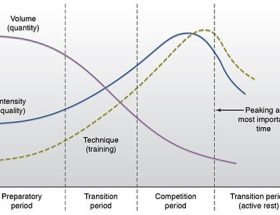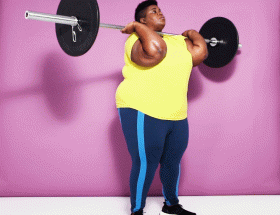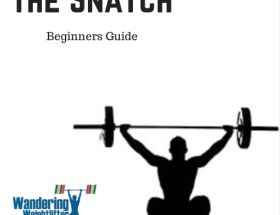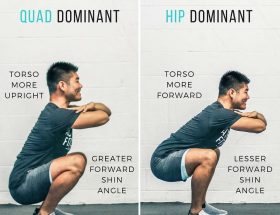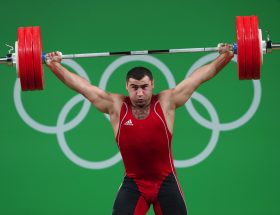Weightlifting is a physically demanding sport that requires athletes to push their bodies to the limit. Whether you’re a professional weightlifter or an avid gym-goer, incorporating effective recovery strategies into your routine is essential for overall performance and injury prevention. In this article, we will explore various recovery strategies that can help weightlifters stay at the top of their game.
The Importance of Recovery
Weightlifting puts a considerable amount of stress on the body. During training sessions, your muscles undergo microtears, and energy stores get depleted. Without proper recovery, these microtears can accumulate, leading to muscle imbalances, decreased performance, and a higher risk of injury. Additionally, inadequate recovery can lead to mental fatigue, lack of motivation, and overall burnout.
Rest and Sleep
One of the most fundamental aspects of recovery is getting enough rest and sleep. Rest allows your body to repair damaged tissues and replenish energy stores. Aim for at least one rest day per week to give your muscles time to recover. In addition to rest, prioritize quality sleep. During sleep, the body releases growth hormone, which is crucial for muscle repair and recovery. Aim for 7-9 hours of uninterrupted sleep every night.
Proper Nutrition
Nutrition plays a significant role in recovery for weightlifters. After intense training sessions, it’s important to refuel your body with the right nutrients. Make sure to include a combination of carbohydrates and proteins in your post-workout meals. Carbohydrates replenish glycogen stores, while proteins provide essential amino acids for muscle repair and growth. Additionally, stay hydrated by drinking plenty of water throughout the day.
Active Recovery
While rest days are important, incorporating active recovery exercises into your routine can aid in muscle recovery and increase blood flow to the muscles. Activities like foam rolling, stretching, yoga, and low-intensity cardio can help reduce muscle soreness, enhance flexibility, and improve overall mobility. Aim for 20-30 minutes of active recovery exercises on your rest days.
Cryotherapy and Cold Water Immersion
Cryotherapy and cold water immersion are techniques that involve exposing your body to extremely cold temperatures for a short period. These methods have been found to reduce inflammation, muscle soreness, and aid in recovery. Cold showers, ice baths, and cryotherapy chambers are all effective ways to incorporate cold therapy into your recovery routine. However, it’s crucial to consult with a healthcare professional before trying these methods.
Massage and Foam Rolling
Massage therapy and foam rolling are excellent recovery strategies for weightlifters. They can help increase blood flow, release muscle tension, and promote muscle relaxation. A deep tissue massage from a licensed therapist or using a foam roller to target specific muscle groups can aid in reducing muscle soreness and tightness. Incorporate regular massages or foam rolling sessions into your recovery routine for optimal results.
Active and Passive Stretching
Stretching has numerous benefits for weightlifters. Active stretching involves moving your muscles against resistance, while passive stretching involves holding a position with the help of external assistance. Both forms of stretching can improve flexibility, reduce muscle stiffness, and enhance range of motion. Include dynamic stretches before your workout and static stretches after your workout to maximize recovery and prevent injury.
Mindfulness and Stress Reduction
High levels of stress can hinder recovery and performance. Incorporating mindfulness and stress reduction techniques into your routine can have a profound impact on your overall well-being. Practice meditation, deep breathing exercises, or engage in activities that help you relax and unwind. Minimizing stress levels can improve sleep quality, reduce muscle tension, and promote faster recovery.
Listen to Your Body
Every individual is unique, and recovery strategies may differ depending on your body’s needs. It’s important to listen to your body and make adjustments accordingly. If you’re feeling excessively fatigued or experiencing persistent muscle soreness, it may be a sign that you need more rest or a change in your training intensity.
Incorporate Recovery into Your Routine
Recovery should be an integral part of your training routine. Don’t view it as an optional luxury, but rather as a necessity for long-term success and injury prevention. Plan your training schedule in a way that allows for adequate rest days and prioritize recovery strategies that work best for you.
Conclusion
Recovery is crucial for weightlifters who want to perform at their best and stay injury-free. By incorporating rest, proper nutrition, active recovery, cryotherapy, massage, stretching, stress reduction techniques, and listening to your body, you can optimize your recovery and enhance your overall weightlifting performance. Remember, recovery is not a one-size-fits-all approach, so experiment with different strategies to discover what works best for you.

